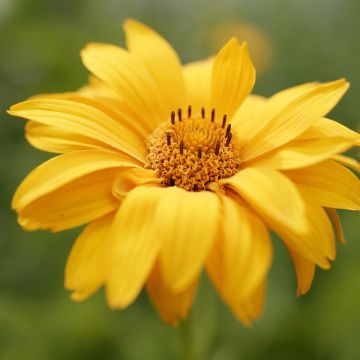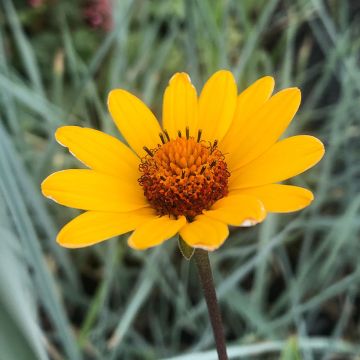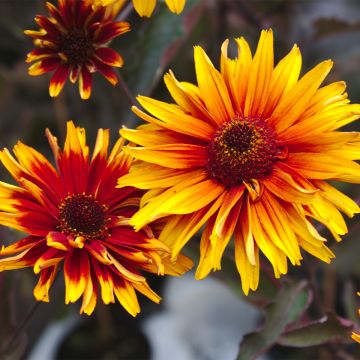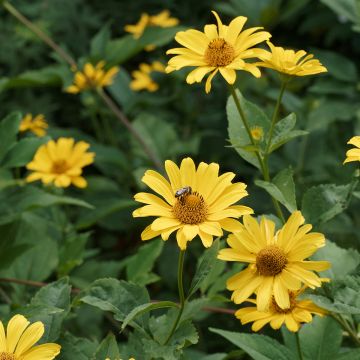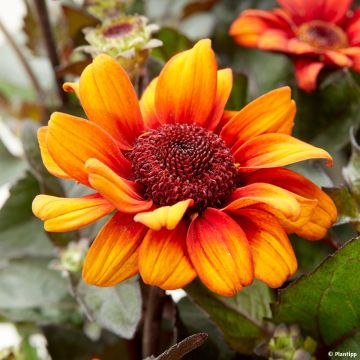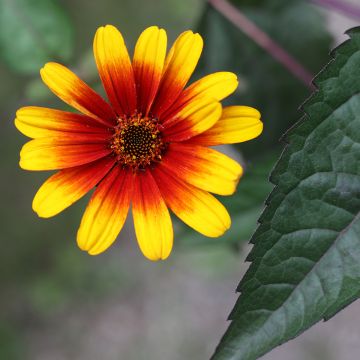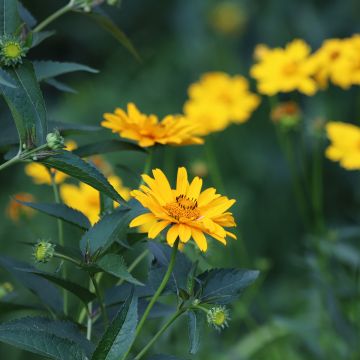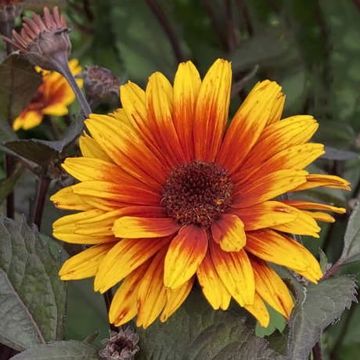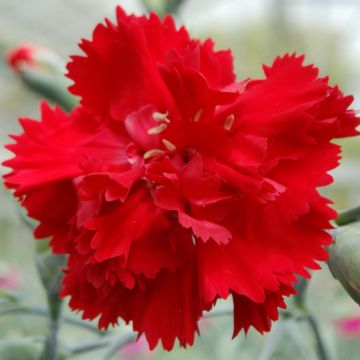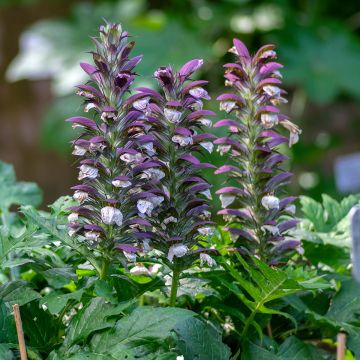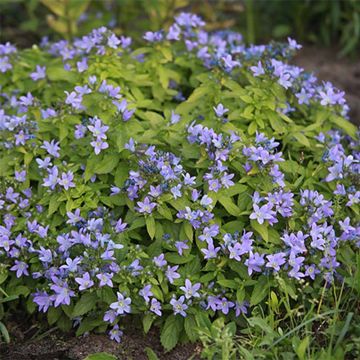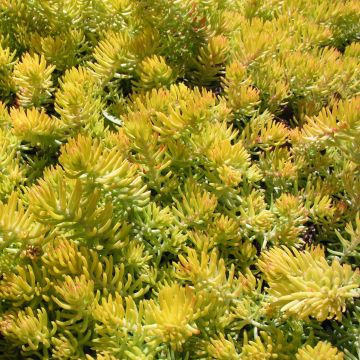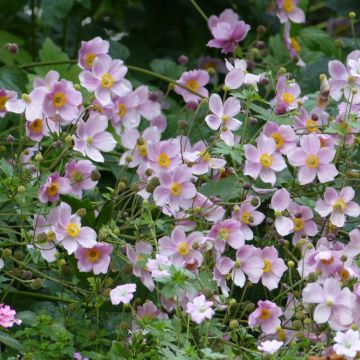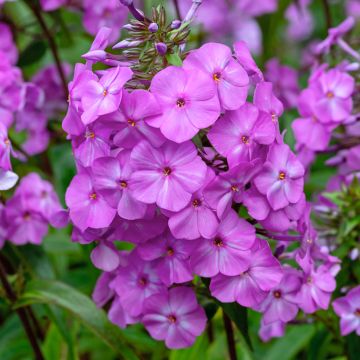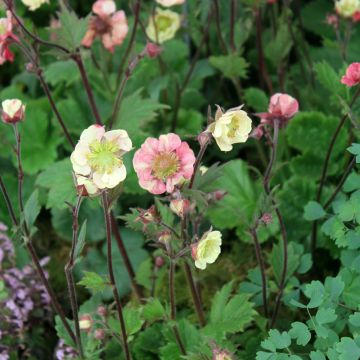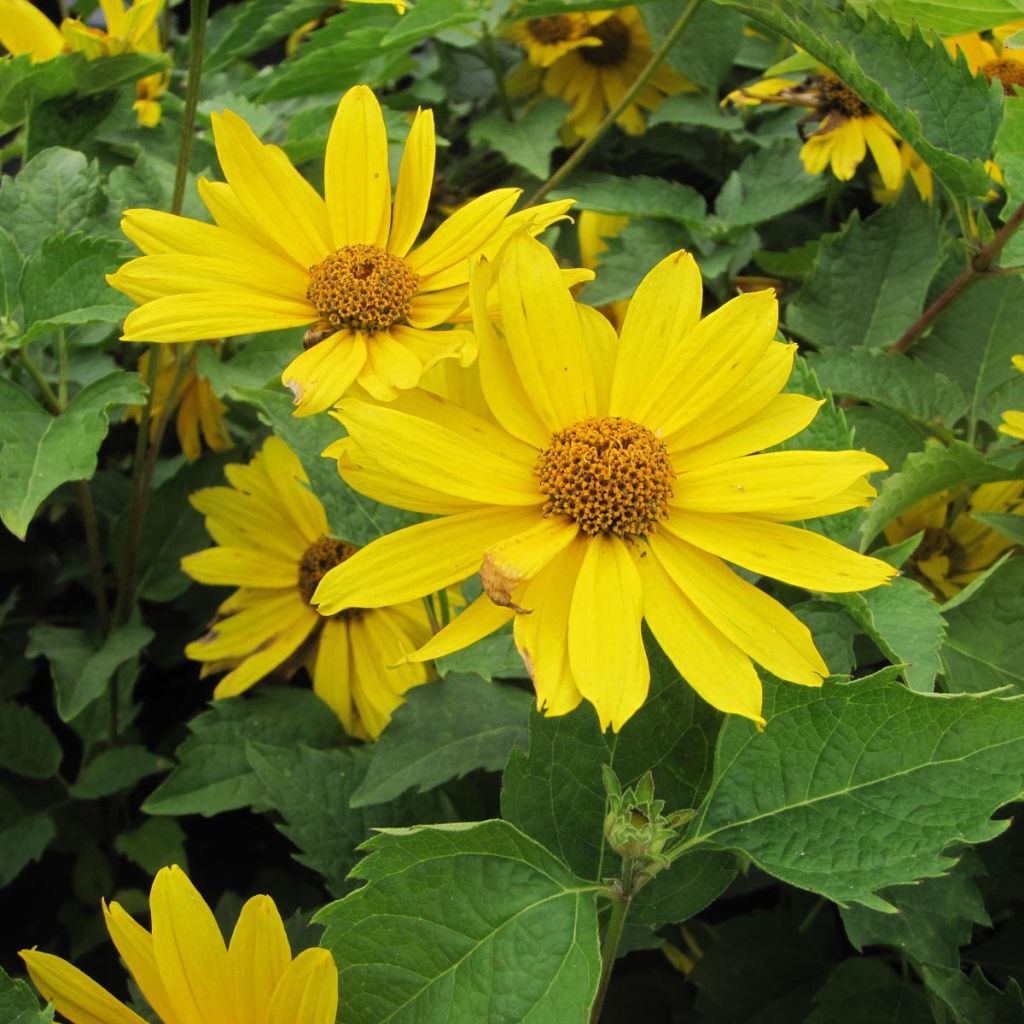

Heliopsis helianthoides Mars
Heliopsis helianthoides Mars
Heliopsis helianthoides Mars
Oxeye sunflower, False sunflower, Smooth oxeye, Rough oxeye
This item cannot be shipped to the selected country
Delivery charge from €5.90
More information
Schedule delivery date,
and select date in basket
This plant carries a 12 months recovery warranty
More information
We guarantee the quality of our plants for a full growing cycle, and will replace at our expense any plant that fails to recover under normal climatic and planting conditions.
From €5.90 for pickup delivery and €6.90 for home delivery
Express home delivery from €8.90.
Does this plant fit my garden?
Set up your Plantfit profile →
Description
Heliopsis helianthoides 'Mars' warms up dull autumn days with its semi-double suns with orange hearts. The bright and golden inflorescences rise to the top of tall, strong and rigid stems. It is a beautiful perennial closely related to Helianthus, the famous sunflower, to which it bears a strong resemblance. It is an undemanding plant, suitable for well-drained soil, in full sun or partial shade. Its great vigour and simplicity make it suitable for the back of borders and rustic compositions.
Heliopsis belongs to the Asteraceae family. H. helianthoides, from which the 'Mars' variety originates, is native to North America, where it is usually found in open woodland areas and tall grass prairies. 'Mars' is a non-running woody perennial. It forms a spreading bushy clump, composed of numerous sturdy stems, reaching 1.5 metres (5 feet) in height and occupying 60cm (24in) of ground space. Its growth is moderate to fast. It blooms from June to September. The inflorescence appears at the end of branched stems, composed of several heads (heads). The heads form a beautiful rounded central disk that turns orange and then brown in autumn, surrounded by a double crown of ligulate yellow flowers. The deciduous foliage extends to the top of the stems, it is bright green and rough, the leaves are lanceolate and dentate, about 10cm (4in) long and somewhat triangular.
Fashion trends can be quite inscrutable because the upright habit of these perennials, their long flowering period and their low requirements, are all keys that should open the door to every garden... but no! However, all specialists agree that they are excellent plants. 25 years ago, Alan Bloom, a famous perennial plant breeder in England, said: "They are certainly the last plants I would part with if I decided to eliminate the yellow colour from the borders of my garden." Combine Heliopsis 'Mars' with other tall, easy and vigorous perennials such as mulleins, giant scabious or Verbena bonarienses, for example, in rustic borders. It is a very good plant for quickly filling the back of a border.
Report an error about the product description
Heliopsis helianthoides Mars in pictures
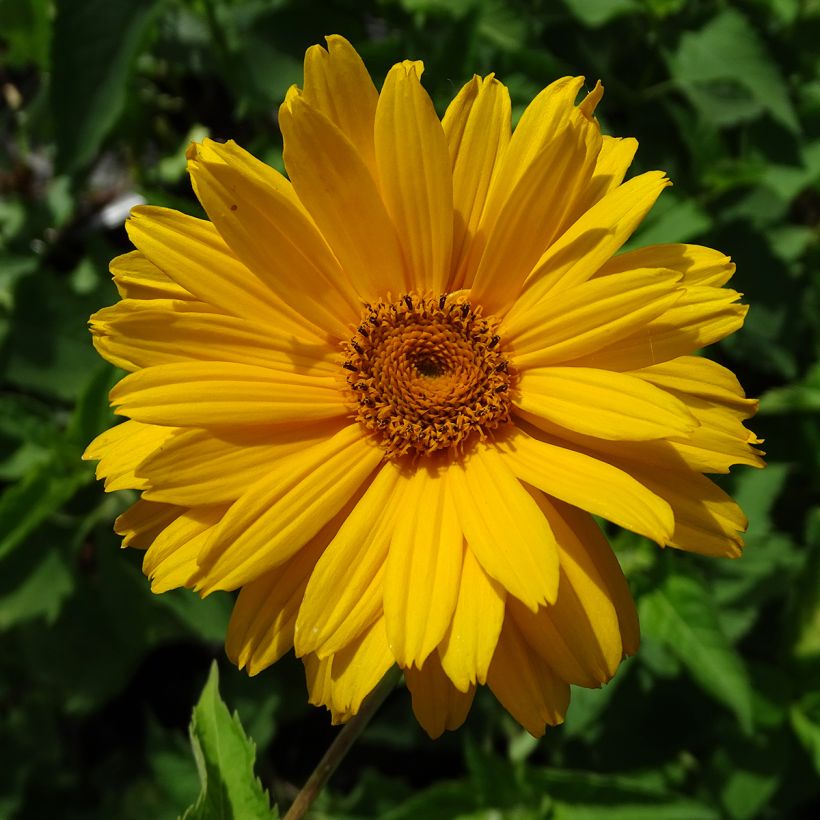

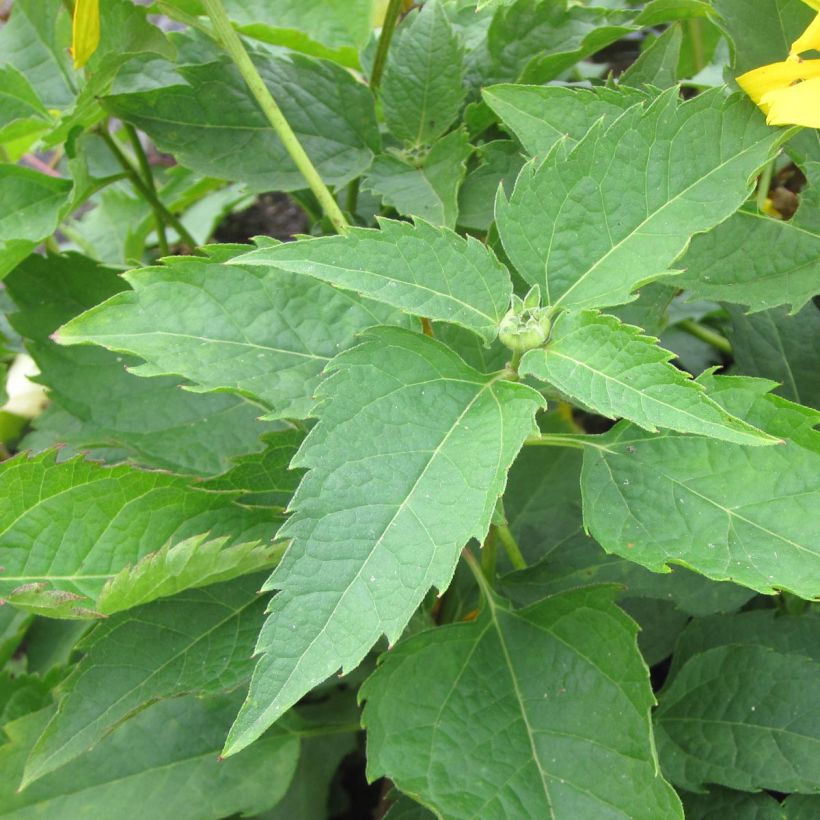

Flowering
Foliage
Plant habit
Botanical data
Heliopsis
helianthoides
Mars
Asteraceae
Oxeye sunflower, False sunflower, Smooth oxeye, Rough oxeye
Cultivar or hybrid
Other Heliopsis
Planting and care
The false sunflower is an easy-to-grow plant. It adapts to any well-drained soil and only fears excessive winter moisture and slightly dry soil in summer. However, it tolerates clayey, poor, and occasionally dry soils. Heliopsis helianthoïdes 'Mars' prefers a sunny exposure, but it tolerates partial shade, which will give it a looser habit, in which case it will require light staking. It should be protected from strong winds. It is advisable to deadhead the flowers to encourage reblooming. The plant can be divided every 2 to 3 years to maintain its vigour. You can also cut the plant back by half in early June to promote the strength of the clump. Note that some varieties of Heliopsis are susceptible to powdery mildew and rust when growing conditions are not optimal. A preventive treatment against fungal diseases should be carried out towards the end of winter. Afterwards, treatment should only be applied if necessary, in case of confirmed presence of parasites on the plant, using targeted treatments whenever possible. In any case, treatment should be avoided during flowering to avoid harming pollinating insects.
Planting period
Intended location
Care
-
, onOrder confirmed
Reply from on Promesse de fleurs
Summer flowering perennials
Haven't found what you were looking for?
Hardiness is the lowest winter temperature a plant can endure without suffering serious damage or even dying. However, hardiness is affected by location (a sheltered area, such as a patio), protection (winter cover) and soil type (hardiness is improved by well-drained soil).

Photo Sharing Terms & Conditions
In order to encourage gardeners to interact and share their experiences, Promesse de fleurs offers various media enabling content to be uploaded onto its Site - in particular via the ‘Photo sharing’ module.
The User agrees to refrain from:
- Posting any content that is illegal, prejudicial, insulting, racist, inciteful to hatred, revisionist, contrary to public decency, that infringes on privacy or on the privacy rights of third parties, in particular the publicity rights of persons and goods, intellectual property rights, or the right to privacy.
- Submitting content on behalf of a third party;
- Impersonate the identity of a third party and/or publish any personal information about a third party;
In general, the User undertakes to refrain from any unethical behaviour.
All Content (in particular text, comments, files, images, photos, videos, creative works, etc.), which may be subject to property or intellectual property rights, image or other private rights, shall remain the property of the User, subject to the limited rights granted by the terms of the licence granted by Promesse de fleurs as stated below. Users are at liberty to publish or not to publish such Content on the Site, notably via the ‘Photo Sharing’ facility, and accept that this Content shall be made public and freely accessible, notably on the Internet.
Users further acknowledge, undertake to have ,and guarantee that they hold all necessary rights and permissions to publish such material on the Site, in particular with regard to the legislation in force pertaining to any privacy, property, intellectual property, image, or contractual rights, or rights of any other nature. By publishing such Content on the Site, Users acknowledge accepting full liability as publishers of the Content within the meaning of the law, and grant Promesse de fleurs, free of charge, an inclusive, worldwide licence for the said Content for the entire duration of its publication, including all reproduction, representation, up/downloading, displaying, performing, transmission, and storage rights.
Users also grant permission for their name to be linked to the Content and accept that this link may not always be made available.
By engaging in posting material, Users consent to their Content becoming automatically accessible on the Internet, in particular on other sites and/or blogs and/or web pages of the Promesse de fleurs site, including in particular social pages and the Promesse de fleurs catalogue.
Users may secure the removal of entrusted content free of charge by issuing a simple request via our contact form.
The flowering period indicated on our website applies to countries and regions located in USDA zone 8 (France, the United Kingdom, Ireland, the Netherlands, etc.)
It will vary according to where you live:
- In zones 9 to 10 (Italy, Spain, Greece, etc.), flowering will occur about 2 to 4 weeks earlier.
- In zones 6 to 7 (Germany, Poland, Slovenia, and lower mountainous regions), flowering will be delayed by 2 to 3 weeks.
- In zone 5 (Central Europe, Scandinavia), blooming will be delayed by 3 to 5 weeks.
In temperate climates, pruning of spring-flowering shrubs (forsythia, spireas, etc.) should be done just after flowering.
Pruning of summer-flowering shrubs (Indian Lilac, Perovskia, etc.) can be done in winter or spring.
In cold regions as well as with frost-sensitive plants, avoid pruning too early when severe frosts may still occur.
The planting period indicated on our website applies to countries and regions located in USDA zone 8 (France, United Kingdom, Ireland, Netherlands).
It will vary according to where you live:
- In Mediterranean zones (Marseille, Madrid, Milan, etc.), autumn and winter are the best planting periods.
- In continental zones (Strasbourg, Munich, Vienna, etc.), delay planting by 2 to 3 weeks in spring and bring it forward by 2 to 4 weeks in autumn.
- In mountainous regions (the Alps, Pyrenees, Carpathians, etc.), it is best to plant in late spring (May-June) or late summer (August-September).
The harvesting period indicated on our website applies to countries and regions in USDA zone 8 (France, England, Ireland, the Netherlands).
In colder areas (Scandinavia, Poland, Austria...) fruit and vegetable harvests are likely to be delayed by 3-4 weeks.
In warmer areas (Italy, Spain, Greece, etc.), harvesting will probably take place earlier, depending on weather conditions.
The sowing periods indicated on our website apply to countries and regions within USDA Zone 8 (France, UK, Ireland, Netherlands).
In colder areas (Scandinavia, Poland, Austria...), delay any outdoor sowing by 3-4 weeks, or sow under glass.
In warmer climes (Italy, Spain, Greece, etc.), bring outdoor sowing forward by a few weeks.

































